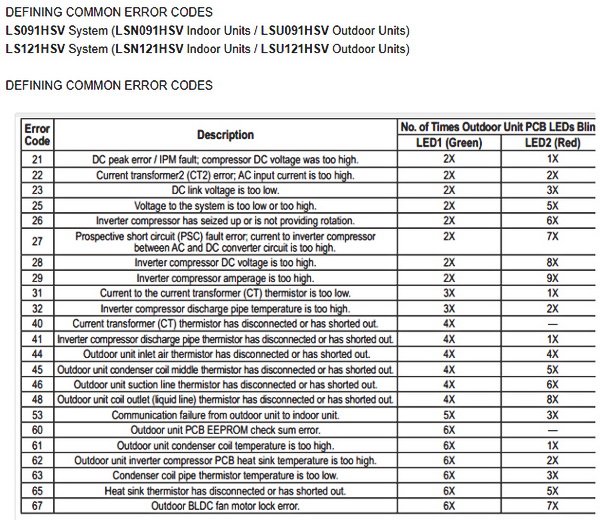
The F2 error code often relates to issues with the indoor or outdoor temperature sensor of your air conditioning unit. When these sensors don’t work properly, it’s like trying to drive a car with a faulty speedometer; you can’t be sure it’s functioning as it should. The good news is that by understanding how these sensors work and what causes them to malfunction, you can prevent this error from happening and ensure your air conditioner runs smoothly all season long.
Here’s what we’re going to cover: we’ll start with what F2 means and why it happens. Then, we’ll walk through some proactive steps you can take to prevent this error from popping up in the future. By the end, you’ll be more than ready to tackle your air conditioning blues with confidence!
Understanding Error Code F2 and Its Causes
When you see “F2” flashing on your air conditioner display, it’s not just a random jumble of letters and numbers — it’s a signal that something’s awry with the temperature sensors. Imagine these sensors as the thermostats of your unit; they measure the temperature inside your space and send this information to the air conditioner’s brain, allowing it to adjust cooling settings accordingly. If these sensors fail, it’s as if the air conditioner is trying to read a weather report with smeared glasses. This confusion can lead to inefficient cooling or even a complete halt.
So, what’s typically behind these sensor woes? Often, it’s a matter of wear and tear. Like everything else, sensors age and can become worn out, much like an old pair of sneakers losing their tread. Other times, environmental factors such as dust, dirt, or even tiny critters can interfere with their operation. When these sensors are covered in grime, it’s like trying to see through a dusty windshield — not exactly ideal for precision.
Additionally, electrical issues can play a part. The connectors that link the sensors to the control board might become loose, corroded, or damaged over time, disrupting communication. And remember those power surges during a thunderstorm? They can be the unexpected gust of wind that knocks these delicate parts off balance. Understanding these common causes is the first step to ensuring your air conditioner’s sensors stay in tip-top shape.
Regular Maintenance: The Key to Prevention
You might think of maintenance as a chore, like flossing your teeth or changing your car’s oil, but just like those tasks, regular upkeep for your AC unit can save you a lot of headache down the line. For starters, it’s crucial to keep the air conditioner — especially the sensors — clean and free of dirt. A simple way to do this is by gently vacuuming or wiping the sensors with a soft, dry cloth. This small effort can make a big difference, like removing a blur from a camera lens to capture a clear picture.
Beyond cleaning, professional inspections are invaluable. An experienced technician can spot potential issues before they become full-blown problems. It’s similar to having a skilled mechanic check your car — they know what to look for and can often fix things before you even realize something is wrong. Scheduling a check-up at least once a year can ensure all components, including those sneaky sensors, are functioning optimally.
Lastly, watch out for power surges and fluctuations. Using a surge protector can shield your air conditioner from the sudden spikes in voltage that can damage sensitive components. It’s like wearing a life jacket during a boat ride; even if the waters seem calm, you’re prepared for any unexpected waves. By taking these precautions, you’re setting the stage for a reliable, trouble-free cooling experience.
Simple Fixes and When to Call a Professional
Sometimes, despite our best efforts, that F2 error pops up unexpectedly. Don’t fret — it’s not the end of the world! There are a few simple checks you can do yourself before calling in reinforcements. Start by making sure your air conditioner is powered down and unplugged. Then, carefully inspect the sensors for any visible dirt or dislodgement. A gentle adjustment might be all that’s needed to bring things back to normal.
If cleaning and tweaking the sensor doesn’t resolve the issue, it might be time to consult the experts. Just like when a persistent headache sends you to the doctor, recurring error codes are a sign that professional help is warranted. These technicians have the expertise to diagnose and repair more complicated problems that might not be immediately visible, such as internal wiring issues.
Remember, trying to fix complex problems without proper knowledge or tools can sometimes make matters worse, much like trying to mend a leaky pipe without the right equipment. By knowing when to call for help, you’re ensuring your air conditioner gets the proper care it needs without unnecessary risk.
Closing and Future Tips
Preventing the F2 error code from appearing on your LG air conditioner is all about proactive care and attention to detail. By keeping your sensors clean, scheduling regular maintenance, and knowing when to call in the professionals, you’re safeguarding your comfort against unexpected interruptions.
To wrap things up, think of your air conditioner like any other essential household item — it requires regular attention and care to function its best. With these tips, you’ll be well-equipped to keep your home cool and comfortable, ensuring that error codes don’t stand a chance against your newfound expertise. Now go ahead, enjoy that refreshing breeze without a worry in the world!